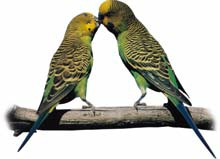第六节 语言领域中的英语渗透
在幼儿园语言领域的双语教学旨在在拓展学生的英语经验的基础上,促进幼儿综合语言能力的提高。语言领域中的双语活动比较偏重于生活的词汇和语言素材,幼儿以乐意与人交谈并且讲话礼貌、注意倾听并理解日常用语,能听懂和会说为目标,以体验交流的乐趣、学习使用适当礼貌的语言交往、养成注意倾听的习惯。
(一)幼儿园语言双语活动的落实
1.围绕语言要素的“语音”与“词汇”、“句型”开展教学。这些内容可以是以单元、主题、版块等多种形式组织起来的,有一定的系统性、完整性、层次性。
2.在语言教育中不仅要重视语言形式,更应该重视幼儿语言功能。即创设自然的语言交往氛围,鼓励、指导幼儿运用完整、流畅、规范、灵活的英语进行表达交流,提高幼儿的语言运用能力。幼儿的语言学习包括语言形式的学习、语言内容的学习和语言运用的学习,在进行幼儿园语言双语活动中,这三者缺一不可。
3.要充分利用诗歌、故事、散文、童话等文学体裁及阅读、讲述、谈话等活动形式进行英语的渗透。
(二)相关语言领域的英语词汇和句型
1.参考用语
(1)Let's begin(our class).上课。
(2)Stand up.起立。
(3)Sit down.坐下。
(4)Sit in a semi-circle.坐成半圆。
(5)Please form a circle.请围成一圈。
(6)Sit up(straight).坐直。
(7)Put your hands on your knees.把手放在膝盖上。
(8)Is everybody here?人都到齐了吗?
(9)Come(over)here.过来。
(10)Come to the front.到前面来。
(11)Go back to your seat.请回到自己座位上去。
(12)Back into your group.请归队。
(13)Look and listen.看着,听好。
(14)Listen to me,please.听我说。
(15)Listen and say.边听边说。
(16)Say it after me.跟我说。
(17)Say it again.再说一遍。
(18)Say it in English,please.请用英语说。
(19)Follow me.跟我说。
(20)Read it aloud.大声读出来。
(21)Do/Say it like this.像这样做/说。
(22)Do what I do.和我一样做。
(23)You may do as I do.可以跟我做。
(24)Who will answer the question?谁来回答这个问题?
(25)Who will try? /Who'd like to try?谁想试一试?
(26)Who knows?谁知道?
(27)Volunteers? /Any volunteers?谁主动来参与?
(28)Do you want to go?你想去吗?
(29)Raise your hands,please.请举手。
(30)Put down your hands.请把手放下来。
(31)Are you ready?你们准备好了吗?
(32)Speak clearly,please.请说得清楚些。
(33)Look at the blackboard.看黑板。
(34)Do you like the story?你喜欢那个故事吗?
(35)Who wants to be ...?谁想扮演……?
(36)What is the name of this story?故事的名字是什么?
(37)How many × × are there in the story?故事中有多少个……?
(38)How is the story?这个故事怎么样?
(39)Can you tell us your idea?能说说你的想法吗?
(40)What will happen next?接下来会发生什么事情呢?(接下来会怎样呢?)
(41)If you were × × ,what would you do?如果你是……你会怎么做?
(42)How many sentences in the poem? Which one do you like best? And why?这首诗一共有几句?你最喜欢哪一句?为什么?
(43)What is the story about?故事里讲了一件什么事?
(44)Who are in the story? Who do you like best? Why?故事里有谁?你最喜欢谁?为什么?
(45)What did × × say and do? × ×是怎样说的和怎样做的?
(46)Can you say anything with the words in the poem?你能用诗歌里的话说说看吗?
(47)Let's read the poem aloud with music.让我们一起随音乐朗诵诗歌。
(48)Please listen to others carefully.请认真倾听别人的发言。
(49)Please turn to page 6.请把书翻到第6页。
(50)Can you make up a story?你能编一个故事吗?
(51)Try to finish your words in complete sentences.请把话说完整。
(52)Please circle the words you know.请圈出你认识的汉字。
(三)幼儿园语言双语教学活动例举
案例16 A Golden House金色的房子(中班)
苏州工业园区新馨花园幼儿园 周 莱
Teaching Objectives活动目标
1.了解故事《金色的房子》,学习故事中重复的对话。
2.能够在教师引导下表演故事,在活动中体验快乐,知道要与同伴友好相处的道理。
Preparations活动准备
一座金色的房子,小女孩、小鸭、小兔、小狗、小猫、小鸟的图片各1张,头饰各3个。
Procedures活动过程
1.Story-telling讲故事
T:Today July will tell you a story about a house.Can you guess what kind of house it is?
C:I guess it's a ...house.
(请幼儿讨论这是一个怎样的房子的故事)
T:It's a golden house.(将金色房子图片贴在墙上,继续讲故事)
Once upon a time,there is a girl.She has a house.It has red walls,green windows and the golden roof is shining.What a beautiful house! An animal is coming.Can you guess who is coming?
C:I guess it's a ...
T:Look,it's a duck.(将小鸭图片贴在墙上,继续讲故事)
A duck came to her house.It stood in front of her house,and talked to her :“What a beautiful house! Red walls,green windows,and the golden roof is shining.Girl,girl,may I come in?”Then the girl said :“No,no,no.Don't come in!”Duck was sad and sat on the grassplot.
Can you guess who is coming at that time?
C:I guess it's a ...
T:Look,it's a rabbit(dog/cat/bird).(将小兔/狗/猫/鸟的图片贴在墙上)
A rabbit(dog/cat/bird)came to her house.It stood in front of her house,and talked to her :“What a beautiful house! Red walls,green windows,and the golden roof is shining.Girl,girl,may I come in?”Then the girl said :“No,no,no.Don't come in!”Rabbit(dog/cat/bird)was sad and sat on the grassplot.
T:Several days later,the duck,rabbit,dog,cat and bird came back to the grassplot again.They played the game together and had a happy time.Little girl looked out of the window,saw these animals playing together,and felt sad.The animals saw it.They came up to the golden house,knocking at the door.“Do do do...”They said:“Little girl,little girl,come here and play with us.”At last,little girl went out and played games with them.She also invited them to come and play in her house.They had a happy time on the grassplot.
2.Show Time演故事
T:Now we know the story“A Golden House”.Do you want to act out the story?
C:Yes.
T:Now,I will invite some children to come here and show us the story.You can wear these caps and play it.
(请幼儿分组上来表演故事《金色的房子》)
案例17 The Rabbit's FAMILY小兔一家(小班)
苏州工业园区新馨花园幼儿园 徐琳娜
Teaching Objectives活动目标
1.复习单词:蘑菇mushroom,萝卜turnip。
2.复习句型:穿衣服put on the clothes,刷牙brush my teeth,洗脸wash my face。
你喜欢什么? What do you like?我喜欢…… I like ...
学习单词:青菜greens。
3.对英语感兴趣,乐意参与英语活动和英语游戏。
Preparations活动准备
1.大牙刷1把,毛巾1块。
2.三块菜地,上面有蘑菇、萝卜、青菜的模型若干。
3.兔子头饰1个,兔子挂牌若干(与幼儿人数相同)。
4.篮子若干(与幼儿人数相同)。
5.音乐《摇篮曲》、Riding in My Car
Procedures活动过程
1.Greetings and Review问候与复习
T:Hello,I'm the mommy rabbit,and you are all my babies.You see,it turns dark and we should go to sleep.
(柔和的摇篮曲,兔妈妈和兔宝宝都进入了梦乡。)
(一会儿,兔妈妈起床了,并逐个叫醒兔宝宝。)
T:Oh,my dear children,it's time to get up.
T:Good morning,children!
C:Good morning,mommy!
T:Hum,my dear,what should we do after we get up?
C:...
T:Yes,we should put on the clothes.OK,say it together,and put on the clothes.
C:Put on the clothes.
T:OK,let's put on the clothes.
(师生一起穿衣服)
T:Hum,my dear,what should we do after we put on the clothes?
C:...
T:Yes,we should brush our teeth.OK.Say it together:brush our teeth.
C:Brush our teeth.
T:OK,let's brush our teeth.
(Sing the song and do the actions)
Hum,my dear,what should we do next?
C:...
T:Yes,we should wash our face.OK.Say it together,wash our face.
C:Wash our face.
T:OK.Let's wash our face.
(Sing the song and do the actions)
2.Learn the new words学习新单词
T:Hum,I feel a little hungry.Are you hungry?
C:Yes.
(Sing the song Are You Hungry together)
T:Oh,so wonderful! Don't worry,My dear.Mommy will prepare the breakfast for you.But can you tell me what you like?
C:I like mushrooms.
(神秘地从围裙里取出蘑菇,拿着蘑菇,随机问幼儿。)
T:Yes,the mushroom is very delicious.Let's say“mushroom,mushroom,come out!”
C&T:Mushroom,mushroom,come out!
T:Oh,the mushroom is coming! I like mushrooms!
C:I like mushrooms!
T:What about other food? What do you like?
C:I like turnips.
(拿着萝卜,随机问幼儿)
T:Yes,the turnip is very delicious.Let's say“turnip,turnip,come out!”
C&T:Turnip,turnip,come out!
T:Oh,the turnip is coming! I like turnips!
C:I like turnips!
T:Huh ...I will tell you a secret,mommy has prepared other nice food for you.Would you like to have a look?
C:Yes!
T:OK,close your eyes.No peaking!
Oh,it's greens.Please read it after me,greens,greens,greens.
C:Greens,greens,greens.
(拿着青菜,随机问幼儿)
T:I like greens.
C:I like greens.
3.Game:Help yourself to some ...摘蔬菜——句型练习
T:Hum,dear,you see there are many mushrooms,greens and turnips on the field.Listen carefully,mommy will take you to the fields,and you can pick anything you want but remember you must say I like ...before you pick it.Are you clear?
C:Yes!
(幼儿自由地摘蔬菜,练习句型)
T:OK,get the basket.Let's go!
(Do it for several times.)
(师生一起品尝蔬菜)
4.Do the exercises做运动
T:Oh,rabbits,come here,and sit with mommy.Let's eat the nice vegetables.
T:Oh,I'm full,I want no more.Are you full?
C:Yes,I'm full.
T:OK,let's put the baskets here.
T:Oh,it's a sunny day.Let's have a walk,OK?
C:OK.(师生一起散步)
5.A wolf is coming狼来了
T:Oh,look,what's this?
C:It's a wolf.Oh,mommy,mommy ...
Wolf:I'm hungry,I want something to eat.Oh,there are so many rabbits,Haa ...
T:Oh,my dear,don't be afraid.Come here.Let's hide behind the trees.OK?
C:OK.
(The wolf has nothing to eat,so he has to go.)
T&C:Yeah,we are the winners.
(师生一起跳起来,欢呼)
6.Closure结束部分
T:Haa,the wolf is leaving! Let's get out! Are you happy?
C:Yes!
T:Let's sing and dance,OK?
C:OK.(音乐Riding in My Car起,师生一起唱歌跳舞)
T:Oh,it's time to go home.Let's go!
(备注:本案例设计于2005年4月获苏州市双语实验幼儿园英语案例评比二等奖。)
案例18 My Good Friends好朋友(中班)
苏州工业园区新馨花园幼儿园 赵 贞
Teaching Objectives活动目标
1.欣赏童话,学习童话中对话。Someone says to someone :“We are good friends.”Someone says :“Yes,we are good friends.”
2.理解童话中配对关系。
3.初步体会小鸟热爱自由、热爱大自然的情感。
Preparations活动准备
物质准备:
1.拟人化的茶壶、水杯、桌子、椅子等形象,可以进行配对跳舞。
2.铅笔、橡皮等可以配成对的卡片若干。
3.电脑、投影仪、音乐《找朋友》。
经验准备:幼儿已学习过《找朋友》的歌曲,对朋友有一定认识。
Procedures活动过程
1.以开舞会、跳《找朋友》舞的形式导入活动,引起幼儿兴趣。
T:Welcome to our happy party.Now go to look for your good friend and dance together,OK?
C:OK.
2.课件演示茶壶、茶杯、桌子、椅子、钥匙、锁等童话中的物品形象,幼儿进行配对,帮助幼儿理解一一对应的配对关系。
T:Today,a lot of guests will come to our party.Let's welcome them.
T:Look,what can you see?
C:I can see ...
T:So many guests,but they don't have partners.How to join our party? Ah,I have a good idea.Let's help them find a good friend to be their partner,OK? When you get it,you should tell us in this sentence ,“somebody and somebody are good friends.”Who wants to have a try?
(重点是鸟笼和小鸟:有没有不同意见的?你们觉得小鸟的好朋友是谁?那它为什么不喜欢和鸟笼做朋友呢?我们来听听小鸟自己是怎么说的。小鸟刚才说还有谁也是它的好朋友啊,你们想不想和小鸟做好朋友,那你应该怎么做呢。我们要爱护小鸟,保护小鸟,不能捕杀它,这样小鸟就愿意和你成为好朋友了。)
3.通过课件演示,幼儿完整欣赏,初步学习童话中对话式的语言。
T:Just now,you did a good job.You helped all the guests find their friends.Now let's listen to it again.Think it over.What have they said?
T:You know,the table and the chair are good friends.Have you heard what the table says?
(逐句练习句型,初步学习童话中对话式的语言)
4.另外一些可以配对的形象卡片若干,幼儿进行配对。
T:Today,many more guests will come to our party,too.They hide themselves under your chair.Please find them and stick them here.Tell me who you are now.
C:I'm a soap/noodles/...
T:Please have a look.Who is your good friend?
C:My good friend is ...
T:Please hug each other and say“we are friends”.
T:Who is your friend?
T:Now please go and find your good friend and have a dance.
T:Let's have a look,...and ...are good friends.
T:All of you have found your good friends,but you found one friend only.You can find two,three,four,or more friends.Have a try,OK?
T:Ah,why are you good friends?
C:Because we are food.
T:Why are you good friends?
C:Because we can wash.
T:Because we are fruits.
T:So we say,we are good friends.
(重点引导幼儿知道在生活中可以找到很多很多的好朋友,一个,两个,三个,甚至更多,就像中一班所有的小朋友都是好朋友,主题得到了深化。)
5.在《找朋友》的欢乐舞蹈中结束活动。
T:So you can find a lot of good friends.Just like our class one,all the children are good friends,yes or no?
C:Yes!
T:OK,let's go outside to find the good friends in nature.OK.Let's go.
T:Say bye-bye to everyone.
案例19 Lying on a Log躺在木头上睡觉(小班)
苏州幼师附属花朵幼儿园 王 赟
Teaching Objectives活动目标
能在安静的倾听中理解故事内容,并乐意大胆地参与讲述与表演。
Preparations活动准备
有关故事的动物图片,故事幻灯,相关动物头饰,2条长凳,1块磁性黑板。
Procedures活动过程
1.出示图片,复习对话及单词ladybug,lizard,lamb,leopard,lion,并把图片都贴到一块黑板上。
T:What's this?
C:It's a lamp ...
2.听故事录音,初步感受故事。
T:I have a story about these animals.Listen carefully.
教师完整讲述故事一遍。
T:What have you heard?
3.演示故事幻灯。
T:Please have a look.
4.引导幼儿将黑板上的图片进行正确排序。
(1)排序
T:I hear a ladybug in the story.教师把瓢虫的图片贴到另一块黑板上。
What will happen? Please select one picture and put it on the blackboard.
Who will go on?幼儿将图片连接成完整的故事,指念。
(2)运用动作提示,重点学习两句短句
T:What are they doing?(Lying on a log.)
T:At last,what did the lion say?(Now it's time for lunch.)
4.请若干幼儿佩戴头饰。集体讲述故事,请戴相应头饰的小朋友坐到长凳上。(1—2遍)
T:Who wants to be the ladybug ...(分配角色)When the lion say“It's time for lunch”,You must go back to your seat.
5.结束
T:The story is interesting.Let's go back to our classroom and tell our friends.
(备注:2004年10月对苏州市英语课题组成员开放观摩活动。)
案例20 See See See看看看
苏州幼师附属花朵幼儿园 罗 静
Teaching Objectives活动目标
1.在欣赏的基础上理解儿歌的内容,并能积极参与学习。
2.通过游戏活动,掌握新单词(词组)spider,spider web。
3.养成认真倾听英语文学作品的习惯。
Preparations活动准备
1.黄色的盒子1个,仿真蜘蛛1只。
2.图片(starfish,snail,swan,skunk,seashell,seals,stars)各1张。
3.Flash课件See See See
Procedures活动过程
1.Review复习:starfish,snail,swan,skunk,seashell,seal,star。
T:What is this?
C:A box.
T:There are many things in the box.
Now,look at me please.(教师摸出一张卡片)
What is this?(A starfish)(利用重、轻、粗、细的声音来练习)
C:Starfish.(教师贴在黑板上)
(教师请幼儿上来摸,然后练习并贴在黑板上)
2.Game游戏:织网
T:Now,let us play a game.
I have the wool ball.(出示线团)
Please pass the ball from one to another.
(幼儿传线团,一只手捏着线,一只手传递线团,直到每人都拿到了线)
T:(出示蜘蛛)OK! Look,who is coming?(A spider)
C:Spider.
T:Please touch it and say“spider”.(幼儿摸一摸蜘蛛,并念单词)
C1&C2 ...Spider.
T:Oh! There is a spider web.(教师指幼儿织成的网)
C:Spider web.
T:Please give it to me.(教师收网)
3.Presentation
(1)请幼儿倾听儿歌。
T:Let us listen to the rhyme.Be quiet.(播放儿歌)
What did you hear? You can speak in English.You can speak in Chinese,too.Say something different.
(2)再听一次儿歌,并结合图片。
T:Let's listen to the rhyme once again.Please look at the pictures.What did you hear?
(3)边听录音,跟念儿歌。
T:Let's read the rhyme together,and do as I do.
4.Closure跟着音乐,初步学唱歌曲See See See,结束活动
T:Listen! Here is a song See See See.Let us sing the song and do as I do.OK? Stand up,please.Music,one,two,begin.
Let's go out and sing the song.OK? Let's go.
附Rhyme:
See See See
See see see,see the spider on the spiderweb.
See see see,see the starfish in the swimming pool.
See see see,see the snail on her shoe.
See see see,see the swan on the slide.
See see see,see the skunk on the sidewalk.
See see see,see the seashell on the sands.
See see see,see the seals on the shore.
See see see,see the stars in the sky.
How shiny!
(四)相关链接
1.An Alphabet of Single Letter Poems can be used on charts,for poetry journals,as a class Big Book,or to make individual books to illustrate.

(资料来源http://www.kinderkorner.com)
2.Tongue Twisters(绕口令)
绕口令(tongue twister)是人们在语言实践中根据语言的特点,编出的一种语言游戏,它短小、活泼、诙谐、有趣。在外语语音的教学中利用绕口令可以训练学生的语音,提高学生的口语能力,帮助学生纠正不正确的发音,区别不同的因素。
元音音素
(1)Bill had billboard,and Bill also has a board bill.The board bill bored Bill,so that Bill sold the billboard to pay his board bill.So after Bill sold his billboard to pay him board bill,the board bill no longer bored Bill.
(2)How many cans can a canner can if a canner can can cans? A canner can can as many cans can if a canner can can cans.
(3)Ask at the next grass path that you pass.
(4)The doctor's daughter knocked at the locked door.
(5)Paul called from the hall that he had slipped on the floor and couldn't get to the door.
(6)Mr.cook said to the cook :“Look at this cookbook.It's very good.”
So the cook took the advice of Mr.Cook and bought the book.
(7)Too few rulers rule as rules should rule.
(8)The first person in a dirty shirt works in the third firm.
(9)Betty Botta bought some butter.
“But,”she said“this butter's bitter
Will make my butter better.”
So she bought a bit of butter
Better than the bitter butter.
And it made her butter better.
(10)I'm afraid you are late.It's half past eight,and they'll close the gate.
(11)We have now found the roundabout without any doubt.
(12)Oh! My! How the mayor glared at the rare chair with an air of despair.
(13)The doctor wasn't sure that he could cure the poor steward of his obscure illness,but the attacks became fewer and fewer as time passed.
(14)It's a joy to watch the boy playing with his toys.
辅音音素
(15)A finnish fisher named Fisher failed to fish any fish one Friday afternoon and finally he found out a big fissure in his fishing-net.
(16)We have five lovely bridges over the river.
(17)She sells sea shells on the deashore,and the shells she sells are seashells,I'm sure.
(18)Little Loly writes a letter to her little sister Lily.
(19)We wonder if Wonderly and Wood would wait for another week.
(20)Only words no deeds,just like a garden full of weeds.
3.Fables(寓言)
(1)The Crow and the Pitcher
A crow felt very thirsty.He looked for water everywhere.Finally,he found a pitcher.
But there was not a lot of water in the pitcher.His beak could not reach it.He tried again and again,but still could not touch the water.
When he was about to give up,an idea came to him.He took a pebble and dropped it into the pitcher.Then he took another and dropped it in.
Gradually,the water rose,and the crow was able to drink the water.
【译文】《乌鸦喝水》
一只乌鸦口渴了,到处找水喝。终于,他找到了一个大水罐。
然而,水罐里面的水并不多,他的尖嘴够不到水面,他试了一次又一次,都没有成功。
就在他想放弃的时候,他突然想到一个主意。乌鸦叼来了一块小石子投到水罐里,接着又叼了一块又一块石头放进去。
渐渐地,水面升高了。乌鸦高兴地喝到了水。
【寓意】有些东西虽然看起来微不足道,但如果积少成多,便会带来很大变化。
(2)A Sick Lion
A lion had come to the end of his days.He lay helpless under a tree.
The animals came around him.When they saw that he was going to die,they thought to themselves ,“Now it's time to pay him back.”
So the boar came up and rushed at him with his tusks.
Then a bull gored him with his horns.The lion still lay helpless before them.
So the ass felt quite safe.He turned his tail to the lion and kicked up his heels into his face.
“This is a double death.”growled the lion.
【译文】《老狮子》
一头年老体衰的狮子病得有气无力,奄奄一息地躺在树下。
动物们围在他的周围,看到狮子快要死了,就来报复他。
一头野猪冲到他身旁,狠狠地咬他。
接着,一头野牛也用角来顶他,狮子无助地躺在那里。
当驴子看到可以对这庞大的野兽为所欲为时,也用他的蹄子用力去踢狮子的头部。这头快要断气的狮子说:“我已勉强忍受了勇者的施暴,但还得含羞忍受你这个小丑的侮辱,真是死不瞑目。”
【寓意】无论过去多么辉煌,都难以避免辉煌失去后别人的不敬与报复。
(3)The Frogs and the Well
Two frogs lived together in a marsh.One hot summer the marsh dried up,so they had to leave it and look for another place.
They soon found a deep well.
One of them looked down and said to the other ,“This is a nice cool place.Let's jump in and settle down here.”
The other frog was much wiser.He replied ,“Don't be so fast,my friend.If this well dries up like the marsh,how should we get out again?”
【译文】《青蛙与井》
两只青蛙住在沼泽里。在一个炎热的夏季,沼泽干涸了,因此他们不得不离开去寻找新的湿地。
他们很快发现一口深井。
其中一只向下看了看对另一只说:“这是个凉爽的好地方,就住这里吧。”
而另一只较明智,他说:“别着急,朋友,如果这口井也干了的话,我们怎么出来呢?”
【寓意】凡事应该首先考虑周到,然后再付诸行动。
(4)The Goose with the Golden Eggs
One morning a countryman went to his goose's nest,and saw a yellow and glittering egg there.
He took the egg home.To his delight,he found that it was an egg of pure gold.
Every morning the same thing occurred,and he soon became rich by selling his eggs.
The countryman became more and more greedy.He wanted to get all the gold at once,so he killed the goose,when he looked inside,he found nothing in its body.
【译文】《农夫和金蛋》
一天早晨,一位农夫发现自家的鹅窝中有一只金灿灿的蛋。
他将蛋带回家,惊喜地发现这是一只金蛋。
此后,农夫每天都能得到一只金蛋。从此,他靠卖金蛋变得富有起来。
农夫变得越来越贪婪,他想一下子得到鹅肚子中所有的金蛋。于是他杀死了鹅,但是,鹅肚子中什么也没有。
【寓意】如果不懂得知足,贪得无厌,我们就会失去已经拥有的东西。
(5)The Fox and the Tiger
An Archer,hunting in the woods,was so successful with his arrows that he killed many of the wild animals.This frightened the rest so much that they ran into the deepest part of the bushes to hide.At last the tiger stood up,pretended to be very brave,and told the other animals not to be afraid anymore.And to rely on his courage,he would attack the enemy on his own.While he was talking,lashing his tail and tearing at the ground with his claws to impress the others,an arrow came and pierced his ribs.The Tiger howled with pain.
While he was trying to draw out the arrow with his teeth,the fox went up to him and asked in surprise,“whoever had the strength and courage to wound such a brave and mighty beast as the Tiger?”
“Nay,”said the Tiger ,“I misjudged my enemy.It was that unbeatable man over there!”
【译文】《狐狸和老虎》
一个射手正在森林里打猎。他的箭法好极了,射死了许多野兽。这可大大地吓坏了其余的动物,他们都跑到最茂盛的灌木丛中躲藏起来。最后,老虎站了起来,装着非常勇敢的样子叫其余的动物相信他的勇敢,不必再害怕。他将独个儿向敌人进攻。他一边说着,一边甩动着他的尾巴,并用他的爪子刨着地上的泥土,想使别人更信任他。就在这时,一枝箭飞来,刺穿了他的肋骨,老虎顿时痛得吼叫起来。
正当他尽力用牙齿拔出身上的箭时,狐狸走上前来吃惊地问道:“谁能有这样的力气和胆量来伤害像老虎这样勇敢而强有力的野兽呢?”老虎说:“我低估了我的敌人,那是无法战胜的人类。”
【寓意】知识就是力量。
(6)The Cock and the Jewel
A cock,scratching in the farmyard for food for the hens,turned up a precious stone that shone and sparked in the sun.
“Well,”said the Cock ,“I don't know what you are doing here.You are a very beautiful thing,and no doubt if your owner found you,he would be delighted.But you are no good to me.I would rather have one grain of delicious barley than all the precious stones under the sun!”
【译文】《公鸡和宝石》
公鸡在农家的庭院里用爪子搔呀刨呀,为母鸡觅食。他从地里翻出了一粒宝石,那粒宝石在阳光下闪闪发光。
“喂!”公鸡说,“我不知道你在这儿干吗。你是一个挺美丽的玩意儿。如果你被主人发现,毫无疑问,他一定会喜出望外,可是,你对我却没有丝毫用处。我情愿要一棵美味的大麦,而不要天下所有的宝石。”
【寓意】有用才有价值。
(7)The Wolf and the Lamb
A Wolf meeting with a Lamb astray from the fold,resolved not to lay violent hands on him,but to find some plea,which should justify to the Lamb himself his right to eat him.He thus addressed him ,“Sirrah,last year you grossly insulted me.”“Indeed,”bleated the Lamb in a mournful tone of voice ,“I was not then born.”Then said the Wolf ,“You feed in my pasture.”
“No,good sir,”replied the Lamb ,“I have not yet tasted grass.”Again said the Wolf ,“You drink of my well.”“No,”exclaimed the Lamb ,“I never yet drank water,for as yet my mother's milk is both food and drink to me.”On which the Wolf seized him,and ate him up,saying ,“Well! I won't remain supperless,even though you refute every one of my imputations.”
【译文】《狼和小羊》
一只狼瞧见一只迷路失群的小羊,决定暂缓下毒手,想先找一些理由,对小羊证明自己有吃他的权利。他就说:“小鬼!你去年曾经骂过我。”小羊可怜地说:“老实说,我去年还没有出生呢。”狼再说:“你在我的草地上吃过草。”
小羊回答说:“不,好先生,我还未曾尝过草的味道呢。”狼又说:“你喝过我井里的水。”小羊叫道:“不,我从没有喝过水,因为直到今天为止,我都是吃着母亲的奶汁。”狼一听这话,便抓住它,把它吃下去,说:“好!即使你驳倒我每一句话,我终究要吃晚餐的!”
【寓意】暴君总有他施暴的借口。
(8)The Father and His Sons
Father had a family of sons who were perpetually quarrelling among themselves.When he failed to heal their disputes by his exhortations,he determined to give them a practical illustration of the evils of disunion;and for this purpose he one day told them to bring him a bundle of sticks.When they had done so,he placed the faggot into the hands of each of them in succession,and ordered them to break it in pieces.They each tried with all their strength,and were not able to do it.
He next unclosed the faggot,and took the sticks separately,one by one,and again put them into their hands,on which they broke them easily.He then addressed them in these words :“My sons,if you are of one mind,and unite to assist each other,you will be as this faggot,uninjured by all the attempts of your enemies;but if you are divided among yourselves,you will be broken as easily as these sticks.”
【译文】《父亲和孩子们》
一位父亲有几个孩子,这些孩子时常发生口角。他丝毫没有办法来劝阻他们,只好让他们看看不合群所带来害处的例子。为了达到这个目的,有一天他叫他们替他拿一捆细柴来。当他们把柴带来时,他便先后地将那捆柴放在每一个孩子的手中,吩咐他们弄断这捆柴。他们一个个尽力去试,总是不能成功。
然后他解开那捆柴,一根根地放在他们手里,如此一来,他们便毫不费力地折断了。于是他就告诉他们说:“孩子们!如果你们大家团结一致,互相帮助,你们就像这捆柴一样,不能被你们的敌人折断;但如果你们自行分裂,你们就将和这些散柴一般,不堪一折了。”
【寓意】团结就是力量。
(资料来源http://www.bjmti.com现代教学网资源中心)
4.语言游戏
(1)Apple Pass.Have all Ss sit in a circle.Use a fake apple and toss it to one S.But you must say one English word as you pass.The S then throws to another S and says a different English word.If the student you threw it to drops it,he/she is out.And the game keeps going until you have one winner.It can be played with different categories,such as Food,Animals,etc.My students love it!(submitted by Kim S.)
(2)Clothes Fun.Students form teams of 3.Each team has a bag with some clothes in it.The first team member puts on the clothes.He/She must say ,“This is my shirt”,“These are my trousers”,“This is my hat”,etc.,with each item of clothing.Then when all the clothes are on,they say ,“I'm dressed”and start removing the clothes,passing them to the next team member,who repeats the process.If you have some fancy high-heeled shoes and silly hats this is a really fun game! Very young beginner students will normally only say ,“shirt”,“hat”,etc.,but it's still a worthwhile game for the vocabulary.My students loved it!
(3)Colors in the Air.This is good for very young ones.Give each S 2 pieces of different colored paper(origami paper is ideal for this).T calls a color(e.g.,“Blue”)and the Ss with that color hold it up.(submitted by Jo Ruoss)
(4)Color Game.This is a good one for teaching the names of colors to young children.Arrange various colors of construction paper in a circle.Play some music and have the children march around the circle.Stop the music and all the children must sit down next to a color.Pick a color and sing(to the tune of“Twinkle Twinkle Little Star”):“Who's beside the color(insert name of color)? Please stand up,if it's you.”At that point,the child next to the color mentioned stands up.Continue until all of the children get a turn.(submitted by Josie Weisner)
(5)Cross the River.Place flashcards on floor in winding manner.Each card represents a stepping stone in the river,as students must say word/phrase/question/etc.in order to step on it and cross the river!(submitted by Michelle K)
(6)Follow the Leader.Ss line up behind the T and follows him/her around the classroom.The T does an action and shouts out the word for that action.The Ss copy the action and repeat the word.Good actions include:wave,hello,goodbye,it's cold/hot,stop,go,run,hop,skip,crawl,walk backwards,jump,sit down,stand up.
(7)Give Me Game.You can use with objects or flashcards.This works well with plastic fruit:Gather and elicit the different kinds of plastic fruit you have.Then throw all the fruit around the classroom(it's fun just to throw the whole lot in the air and watch the chaos of the Ss scrabbling to pick them up).Once the Ss have collected the fruit(they'll probably do their best to hide it in their pockets,etc.)T says“Give me an apple”.The S with the apple should approach the T and hand him/her the fruit“Here you are”.Avoid having the fruit thrown back to you as they can go anywhere and takes a long time to finish this game.
(8)Number Group Game.Play some music and have your Ss walk around the classroom.Stop the music suddenly and call out a number(up to the number of Ss in your class).The Ss must quickly get together in a group of that number.Any Ss who didn't make it sit out until the next round.
(9)Question Chain.Have the Ss sit in a circle.T asks the S next to him/her a question(e.g.,“What's your name ?”“Do you like chocolate cake?”)and the S has to answer the question and then ask the S next to him/her the same question.Continue around the circle and then start a new question.It helps to use a ball to pass around as the questions are being asked and answered.
(10)Touch.Have Ss run around the classroom touching things that T orders them to do(e.g.,“Touch the table.”“Touch a chair.”“Touch your bag.”).Colors work well for this,as Ss can touch anything of that color(e.g.,“Touch something green”).
(11)Whisper Game.Sit the Ss in a circle with you.Whisper a word or sentence in the next S's ear(e.g.,“I'm hungry.”).S/he then whispers that in the next S's ear and so on until the last S.S/he then says the word/sentence out loud to see if it's the same as the original message.
(12)Window Game.You can only do this if your classroom has a window that you can stand outside of and look into the classroom(don't try this on the 10th floor!).Model first:stand the Ss in front of the window and go out of the room.Wave to them through the window and silently mouth some words(so it seems like they can't hear you through the glass).Look at a flashcard and then mouth the word a few times.Go back in and the S who first tells you the word you were saying can have a turn.
(资料来源http://eslkidstuff.com)
【注释】
[1]杨立群.小学双语教学双切整合模式.上海:文匯出版社,2004
[2]杨立群.小学双语教学双切整合模式.上海:文匯出版社,2004
免责声明:以上内容源自网络,版权归原作者所有,如有侵犯您的原创版权请告知,我们将尽快删除相关内容。















